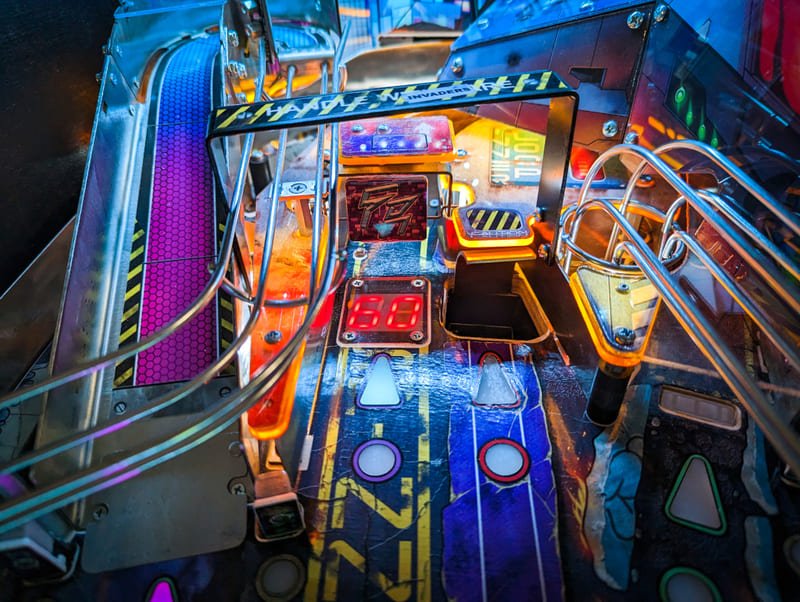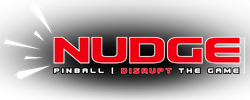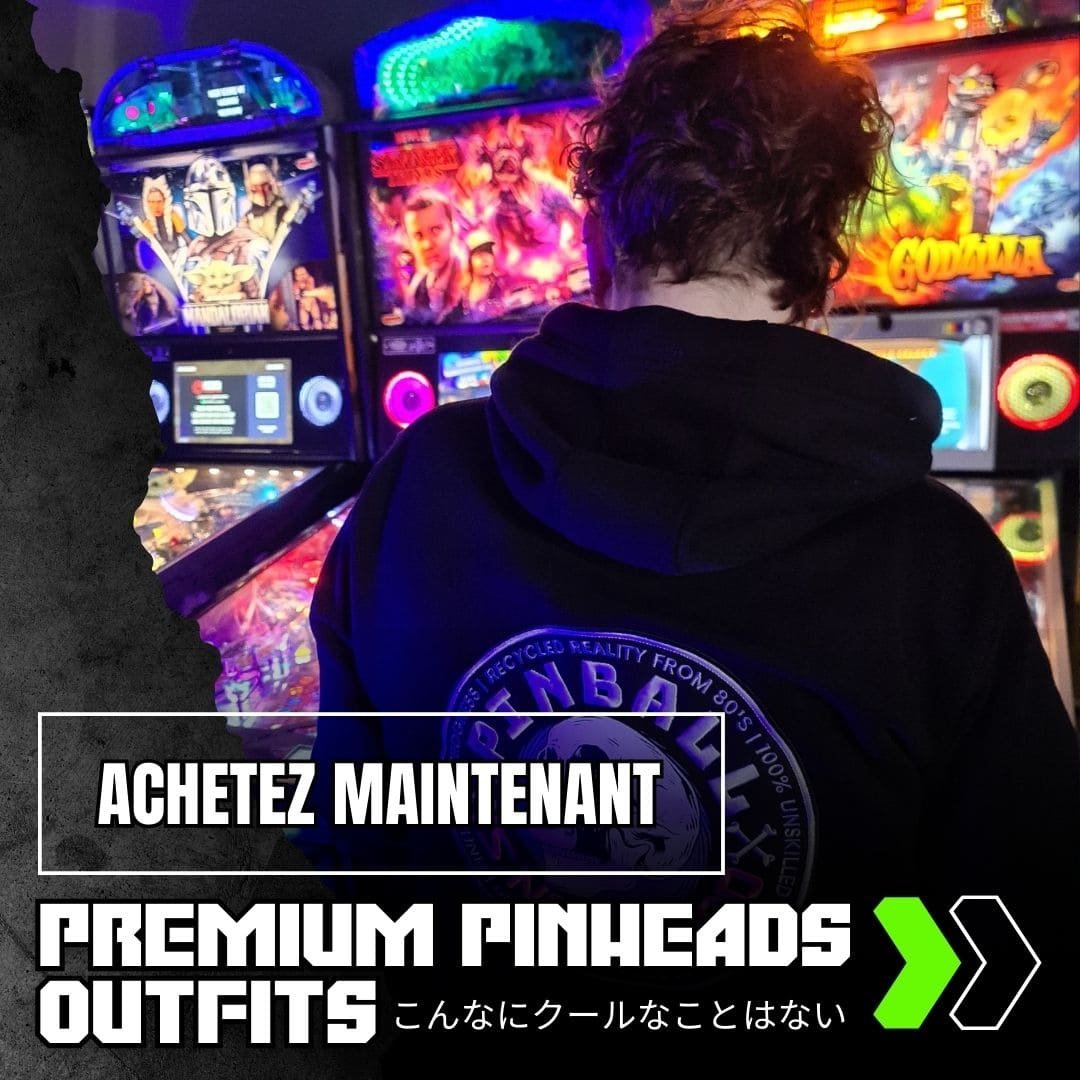Here we go, the last pinball preview of this amazing month of March! In addition to screwing up their own business by making a useless competition, the manufacturers are breaking down the commentators of the pinball world, which is even worse since I am one of them!
So here is the Final Resistance pinball machine, or rather the Final Resistance semi-pinball machine, from Multimorphic P3. Why am I talking about a “semi-game”? First of all, let’s explain the Multimorphic concept, it will be clearer for everyone.
Sommaire
Multimorphic P3: the pinball machine with an interchangeable theme
The P3 platform, produced by Multimorphic, is a physical pinball machine, with a steel ball, a playfield, and interactive objects. But it is modular, as several elements can be changed to swap both the playfield and the theme:
- The bottom of the board comes off, which allows you to put another one on. It is on this part that the toys and other mechanisms specific to a theme are positioned.
- The box decals and front sides are magnetic.
- The artworks of the speakers panels and apron are also interchangeable.
As for the first 2 thirds of the board, the wood is replaced by a screen whose image varies according to the theme installed and the game phase. 2 pieces of straight ramps, backlit targets, slingshots and 2 flippers complete the package to provide a full pinball machine.
Of course, the constraints imposed by the concept limit the possible variations between 2 modules, but it’s hard to do more original and relevant to offer a “several pinball machines in one”.
Don’t expect to save money on the first theme, the price for the platform without any theme (so unusable) is $8,300 at the time of writing. The theme will cost you between $3,000 and $3,500 more. From the second theme purchased the benefit of this solution will be noticeable.
To date, only the Austrian RS Pinball distributes Multimorphic in Europe, and the price of a module is between 4 000 and 7 000€. Prices for the Final Resistance game are not yet known. So don’t be surprised to see no or very few copies in the European Union.
To date, there are 5 themes available and Final Resistance is the latest. It’s also probably the one that could attract the most players, so we’ll quickly explain why.
Scott Danesi at the design
The first asset of this new theme is its designer: Scott Danesi. The man has built a solid reputation during his collaborations with the family-owned Spooky Pinball manufacturer, namely Rick & Morty and Total Nuclear Annihilation.

Besides, there is more than a family resemblance between TNA and Final Resistance:
- The sci-fi theme
- The synthwave soundtrack
- The call-outs like a robot woman
- The countdown to display the duration of the ball save
- The use of neon colors
- Several elements of typography
In short, the designer has created a universe of his own and he takes pleasure in exploring its corners when a license does not impose the theme. Is this a problem? Absolutely not, as Total Nuclear Annihlitation was so attractive.
There is a big difference between the two tables, which makes it possible to avoid the feeling of déjà-vu: Final Resistance has ramps and toys, whereas TNA is a single level (without ramps) and very simple at first sight.
An under-exploited brick-breaker?
The first thing that jumps out when you watch the reveal video is that thick Plexiglas sheets rise up from the board to block the access to the last third of the playfield. Several sheets are presented one behind the other and let us imagine an operation close to a brick-breaker.
The idea is exciting, and on paper allows for many variations by lifting only a portion of the bricks. But having watched the 2 hours of gameplay with Danesi on Buffalo Pinball’s Twitch channel, the use of this feature is less frequent and less varied than one might think. I hope I’m wrong, and anyway the code can always evolve in a second time.
The big space tank
Even more visible than this removable wall, a particularly imposing tank occupies the right part of the module. Its main function is to lock the balls for a multiball.

When it starts, the tank propels the balls not only fast, but from a slightly elevated position. It’s nothing to say that this start of the game phase is surprising, to the point of leaving the player without any reaction when all the balls go to the outhole. No matter, the effect is striking and the balls are returned anyway.
The other elements of the playfield
Apart from the two elephants in the room, there is a nice little innovation about the spinner. The counter of turns to be done is displayed directly on the board and not on the main screen.
Anything that avoids having to look up is welcome. The more a playfield explains its rules without the support of the front screen, the better the player feels.

On the other hand, Scott Danesi seems to have a penchant for ball-holding targets, so he gives us a little one. An old school element always welcome and indeed quite elegant.
The ramps, on the other hand, are nothing memorable. The exits are imposed by the fixed bottom of the playfield, but the entrances are not much more interesting, just like the rather conventional loops.
Final Resistance: the module that will make you switch to P3?
Good question this title is. If you think of Final Resistance as a stand-alone, its content doesn’t compare with the recent competition from traditional manufacturers, knowing that there are no price savings.
If one imagines taking advantage of the modules already released, honestly there is nothing to make eyes shine. Only Weird Al seems to be full of toys and mechanics, but you still have to know this American humorist specialized in parody (which is not obvious outside the United States).
On the other hand, if you think that this Final Resistance game is the first episode of the increase in quality that Multimorphic will offer tomorrow, then it’s time to take the plunge and enjoy the sequel at low cost.

